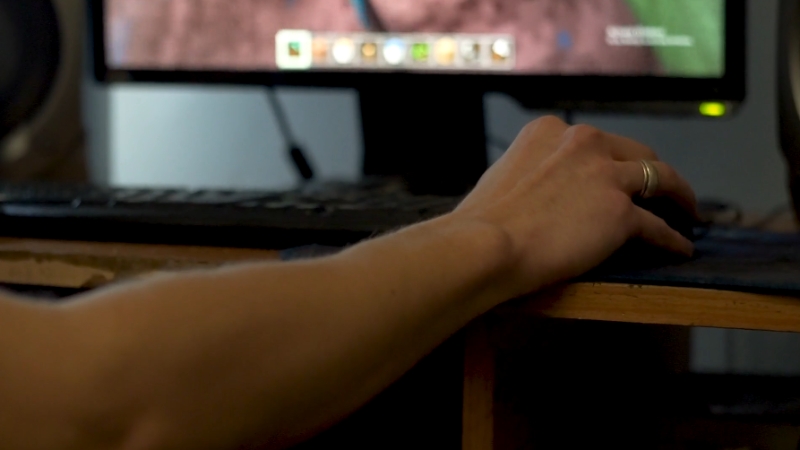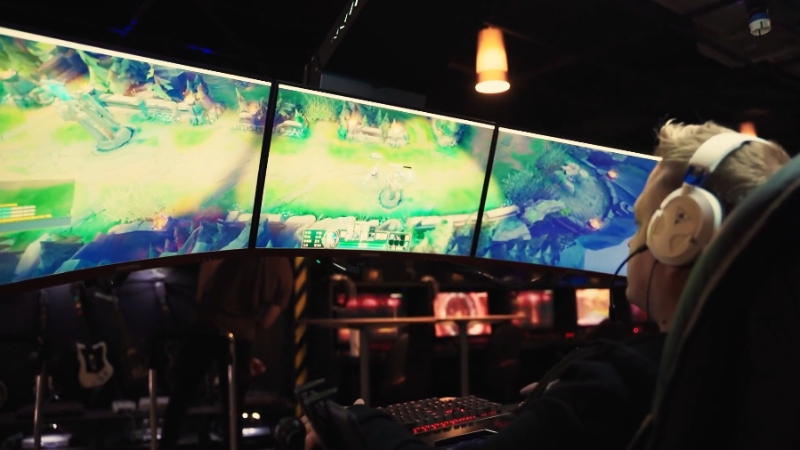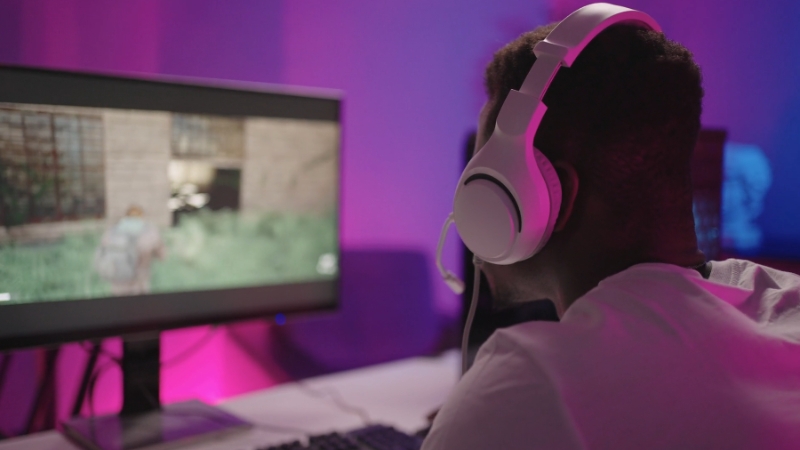When most people think about what makes a great video game, a few things usually come to mind first: the graphics, the gameplay mechanics, and maybe the story.
You hear people rave about the photorealistic lighting in a racing sim or the branching narratives in a massive RPG. But what rarely comes up in casual conversation, yet plays a huge role in whether you love a game or quietly abandon it after 20 minutes, is UX design.
UX, or user experience, is the glue that holds everything together. It’s how you learn the controls without a 200-page manual. It’s how you know where to go without wandering in circles.
And it’s the thing that makes a game feel intuitive, even if you don’t consciously notice it. When it’s done well, you don’t think about it. When it’s missing, you absolutely do.
Let’s talk about why UX design is still flying under the radar in the gaming world—and what that oversight is costing both developers and players.
The Flashier Stuff Gets the Budget
If you’ve ever sat through an E3 trailer or a PlayStation Showcase, you know what gets the spotlight. Explosions. Lifelike character models. Cinematic cutscenes. Publishers know what sells during previews—and it’s not the elegance of an onboarding flow or the readability of HUD elements.
AAA studios often funnel millions into graphics engines and high-end visual effects, while UX teams are either brought in late or not given equal footing in the decision-making process. The thinking goes something like: “Players care about how it looks and how it plays. They’ll figure the rest out.”
But “figuring it out” isn’t always enjoyable. Take Cyberpunk 2077, for instance. Visually, it was stunning. But when it launched in 2020, players quickly ran into clunky menus, a confusing inventory system, and button mappings that felt unintuitive.
It wasn’t just the bugs; it was the friction in doing basic things like equipping gear or setting waypoints. The experience just didn’t feel smooth, and that soured the entire game for a lot of people.
When UX is treated like an afterthought, players notice. Maybe not right away, and maybe not in words like “affordance” or “flow.” But they feel it, and often, they stop playing because of it.
Making Games Is Hard. Really Hard.
Game development is a massive undertaking. You’ve got narrative teams, gameplay designers, animators, sound engineers, network coders, the list goes on.
Projects can stretch across multiple studios and take five or more years to complete. In that chaos, UX design often ends up near the bottom of the priority list.
It’s not that teams don’t care—it’s that resources are limited. Indie developers especially face tough choices: Do you hire another gameplay programmer or a UX researcher? Do you spend two weeks polishing the tutorial or fixing the level loading times?
According to Starloop Studios, building a truly player-centric game requires dedicated time, testing, and personnel.
But when deadlines are looming and budgets are tight, UX tends to get postponed until the very end, when it’s too late to fix core design flaws without tearing down major systems.
In a Crowded Market, Pretty Sells Faster Than Polished

The mobile and indie markets are saturated. There are over a million games across mobile platforms alone, and players scroll through them like TikTok. First impressions matter, and the first thing people see is art style, not interface flow.
That often leads developers to pour everything into making their game look different, hoping that unique visuals will hook people before they swipe away. The downside? UX gets the short end of the stick.
Let’s look at two examples that illustrate the cost:
Game Title
Year
UX Problem
Outcome
Final Fantasy: All the Bravest
2013
Confusing menus, lack of control depth
Negative reviews, low player retention
The Walking Dead: Our World
2018
Clunky navigation, slow performance
Commercial underperformance, backlash
Both games had recognizable IPs and distinct visuals. What they lacked was a user experience that made playing them feel worthwhile. In the end, that sank them.
A Legacy of Suffering
Some of the earliest video games were absolutely brutal. Metroid (1986) dropped players into an alien maze with no map, no hints, and stiff controls. You figured it out by trial and error, or you didn’t.
Back then, nobody talked about UX. The challenge was the point, even if it came from unclear objectives or awkward movement.
Fast forward to today, and you’ll find players using cheap Diablo 4 gold online to skip that awkwardness—but if the buying process is confusing, it ruins the experience.
That old-school mentality still lingers today. Some developers equate difficulty with minimal guidance, thinking that strong UX design might “dumb down” the game.
The truth is, intuitive UX doesn’t mean a game holds your hand. It just means it gives you the right tools to engage with the challenge. Dark Souls is punishing, but it communicates its systems effectively through diegetic UI and consistent rules. You always know why you died.
Play Testing Takes Serious Time
View this post on Instagram
In UX design, testing is where the magic happens. You put your product in front of users, watch where they struggle, and refine accordingly. Simple in theory, but in gaming, not so simple in practice.
Play testing a short app might take 30 minutes. Testing a full-length game? Try 50+ hours, minimum. And that’s just one player.
UXPin points out that major titles like The Witcher 3 require dozens of hours per tester to even scratch the surface. That adds up, especially for smaller studios.
So, what often happens is that QA teams focus on bugs, not usability. As long as the game technically works, it ships.
That’s how you get confusing crafting systems, maps that don’t zoom properly, or inventory screens that take six clicks to manage. It’s not that nobody noticed – it’s that nobody had time to fix it.
Bad UX Doesn’t Mean the Game Is Too Easy
There’s a lingering myth in the industry that UX design is about smoothing out every edge until a game loses its soul. The “Kill All Enemies” button joke from Jakob Nielsen has been floating around for years, a tongue-in-cheek reminder that UX shouldn’t make games boring.
But that misses the point entirely. UX isn’t about removing the challenge. It’s about making sure the right things are challenging.
Confusing menus? Not fun. Inconsistent button prompts? Frustrating. Having to rebind your controls every time you start the game? That’s not difficulty—that’s bad UX.
Games like Monument Valley are proof that thoughtful design doesn’t compromise challenge. It enhances it. The intuitive, tactile interface actually draws players in deeper. It’s not a matter of making games easier—it’s about making them better.
UX Is Finally Getting Some Respect

The good news? Things are changing.
Studios are starting to recognize that good UX isn’t optional anymore. It’s expected. Games like The Last of Us, God of War: Ragnarok, and Hades show how seamless UX can lift a game from great to unforgettable.
Even in mobile gaming, titles like Alto’s Odyssey and Monument Valley are celebrated for how natural they feel to pick up and play.
UX-focused roles are growing in the industry. More designers are advocating for player-centric workflows from the start.
Creative-Words recently noted that a game’s success increasingly depends on how playable it feels, not just how pretty it looks or how deep the story goes.
When UX is treated as a core pillar of development—rather than a box to check at the end—the result is clear. Players stay longer. They leave better reviews. They recommend the game to others.
Wrapping It Up
@itsalisterfelix 🎮 So, you want to break into Game UX? Here’s how. I’ve spent over a decade in the gaming industry from indie studios to AAA titles. I just released a video breaking down everything you need to know to start your Game UX journey: ✅ What Game UX actually is ✅ The skills you need to build ✅ How to break into the industry 📺 Watch the full video and download the guide in my bio! If you’re serious about getting into Game UX, this is your leveling-up guide. 💪✨ #GameUX #UXDesign #GameDevelopment #GameDesign #GDC2025 #GameUXGuide #BreakingIntoGames ♬ original sound – Alister Felix
UX design is the unsung hero of game development. It’s not flashy. It’s not cinematic. But it shapes every second of how a player experiences your game—from the first boot-up screen to the final boss.
And yet, it’s too often underfunded, misunderstood, or pushed aside in favor of flashier elements. That decision can cost studios in reviews, retention, and revenue.
Strong enterprise UI and UX principles can also reduce support costs and shorten learning curves, which saves time and money across the board.
But the tide is turning. As more developers embrace UX from the start, they’re finding that great player experiences don’t just happen—they’re designed. And when they are, players notice.
They might not say, “Wow, that onboarding flow was clean.” But they’ll keep playing. And they’ll tell their friends.

